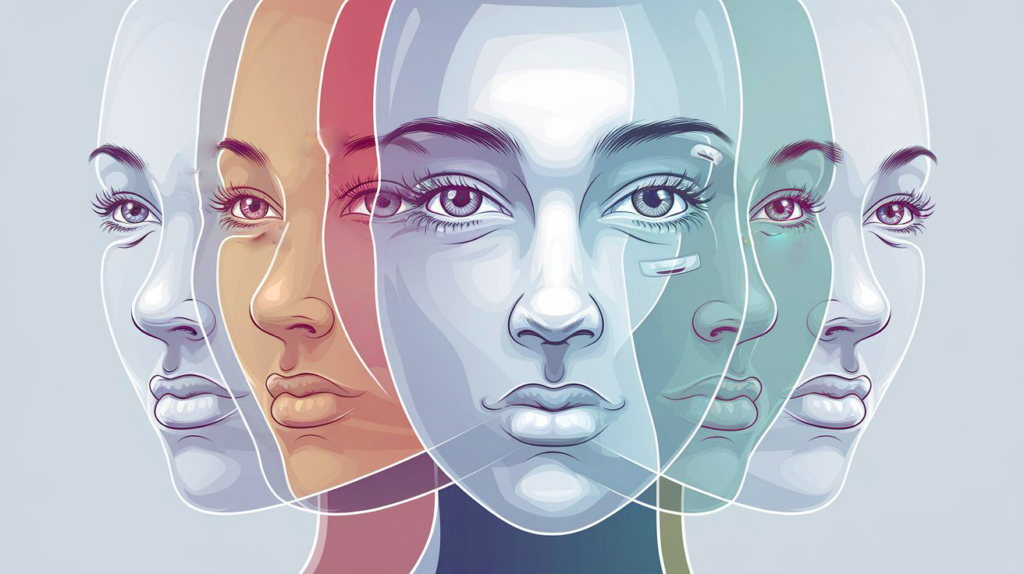Alright, let’s break down the art of people-watching—the real kind, where you’re not just admiring outfits but digging into what makes them tick. We’ll walk through how you can understand motivations, crack body language, analyze personalities, and even sniff out lies. It’s like unlocking a game, only this one has no cheat codes and plenty of plot twists. Here’s your guide to getting the goods on people without making it weird.
What People Say vs. What They Mean
People talk, sure. But what they say and what they mean? Those are two entirely different beasts. If words were the gospel, you’d take every “I’m fine” at face value, and let’s be real—no one’s ever fine. Nonverbal cues? They’re where the truth leaks out. So, your job is simple: learn to read people, ignore the static, and catch what they’re hiding.
Look Beyond Words
- Tone of Voice: Someone’s voice pitch and pace tell you when emotions are bubbling. A quick, high-pitched “I’m okay” is the human equivalent of a flashing red warning sign.
- Pauses and Filler Words: Pauses can reveal uncertainty or even deception, while filler words like “um” and “uh” often point to insecurity or hesitation.
Motivation as a Behavioral Predictor

If you want to figure out someone, start with their “why.” People act for a reason, even if that reason’s buried in the basement of their subconscious. By understanding motives, you start to see what makes them tick, why they respond the way they do, and why they’ll go to extreme lengths to satisfy certain needs.
Motivational Models to Understand the ‘Why’
- The Shadow (Carl Jung’s Concept): Picture the shadow as your evil twin lurking in your psyche, housing everything you’d rather ignore. If you catch someone projecting their shadow—like blaming others for their own flaws—you’re practically reading their diary.
- The Pleasure Principle: People are wired to avoid pain and chase pleasure. A person complaining about a “dead-end” job likely wants more than just a paycheck—they’re chasing significance or respect. Recognize this principle, and you can appeal to their real desires, not just the obvious ones.
- Defense Mechanisms: People defend their ego like it’s their last dollar. When reality doesn’t match up with their self-image, they rationalize, blame-shift, or retreat. Notice this defense, and you’ll understand their insecurities—what they can’t accept about themselves often spills out onto others.
Practical Tips
- Observe Reactions to Conflict: Does a person handle criticism defensively, with jokes, or by shutting down? These responses can reveal core insecurities or confidence levels.
- Spot Recurring Themes: Some people are always seeking approval, while others crave autonomy or control. Tune into these patterns, and you’ll understand their core drives without even asking.
Body Language & Facial Expressions
The human body doesn’t lie as well as the human mouth. Body language is the tattle-tale of emotions, spilling out the truth that words try to hide. When in doubt, trust the body—it’s practically on autopilot.
Facial Expressions and Microexpressions
Microexpressions are those lightning-fast flashes of genuine emotion that cross a person’s face before they can cover them up. Miss them, and you’re missing the clearest truth in the room.
- Surprise: Look for widened eyes and raised eyebrows. Real surprise is involuntary, so if they fake it with a delay, they likely already knew the info.
- Disgust: A quick nose scrunch? Wrinkled forehead? Disgust sneaks out in microexpressions. If someone reacts this way to an idea, odds are it’s a no-go for them, no matter what they say.
- Eye Movements: Look out for darting eyes, which can signal discomfort or lying, and “soft eyes,” where the gaze seems to lose focus, indicating emotional openness or relaxation.
Reading the Body’s Signals
Even a person’s voice counts here. Is it soft? Fast? Look at the whole body in sync; isolated cues can fool you, but the whole picture? Not so much.
- Posture: Does someone lean in or back away? Leaning in usually signals interest, while moving back indicates discomfort or disinterest.
- Arm Movements: Arms crossed? It’s a classic sign of being closed-off or defensive. Pay special attention if they close off like this mid-conversation—something you said may have triggered discomfort.
Mirroring and Matching
Mirroring is the ultimate sign of rapport, the subconscious mimicry of another person’s posture, gestures, and expressions. If they’re mirroring you, you’re in. If not? They’re likely holding back or not fully engaged.
Personality Analysis
Personality is just a fancy word for “how they are, all the time.” People are either consistent or inconsistent, and that’s your map to understanding them. It’s like a cheat sheet to predict how someone will react in most situations.
Popular Personality Theories
- The Big Five Personality Traits: This is like personality broken down into ingredients. It rates people on five scales—Openness, Conscientiousness, Extroversion, Agreeableness, and Neuroticism. If you know these traits, you can practically predict how someone will respond to most situations. High neuroticism? They’ll sweat the small stuff. High openness? They’re open to new ideas.
- Myers-Briggs Type Indicator (MBTI): With 16 types, this test simplifies the infinite complexity of human personality into manageable boxes. It’s not perfect, but it offers clues about how someone processes info and makes decisions. Just note: not everyone fits perfectly.
- The Enneagram: This ancient system breaks personalities into nine types, each with unique fears, desires, and defense mechanisms. It’s great for understanding what drives people deep down—Enneagram Threes, for example, crave success and recognition, while Fives live for knowledge and independence.

Lie Detection Techniques
Lying’s an art, sure, but it’s also a predictable game. Most people think they’re good at spotting lies—they’re usually wrong.
Tactics to Spot Deception
- Baseline Their Behavior
- Before jumping to conclusions, see how they act in neutral settings. If they’re chatty normally, and suddenly clammed up, it’s a signal that something’s off. You need a baseline to spot inconsistencies.
- Microexpressions and Incongruences
- Microexpressions are great, but they only last a fraction of a second. What’s more reliable is incongruence—the mismatch between what they say and what their body language signals.
- Asking Open-Ended Questions
- Simple questions prompt quick answers, but open-ended ones force a person to elaborate. Liars love to stay vague, so push for specifics. You’ll notice them squirm when they realize they’re about to contradict themselves.
- Cognitive Load
- Lying is work. If you see someone struggling to remember their lie, asking for clarification or repeating details can overload their mind and cause slips.
Common Verbal Cues of Lying
- Distancing Language: If they start saying “that person” or “someone else,” rather than using “I,” they’re trying to dissociate from the lie.
- Overly Formal or Defensive Language: “To be perfectly honest” is usually a red flag—people who are truthful rarely need to emphasize their honesty.
Using Observation in Everyday Life
The most powerful tool you have in understanding people is the simple act of observation. You don’t need a psychology degree; just a keen eye and a few smart techniques.
Thin Slicing
“Thin slicing” is the art of making quick, effective judgments based on limited information. It’s gut instinct with a side of science, using brief interactions to understand someone’s personality or mood.
- First Impressions: A person’s appearance, handshake, and eye contact all offer hints of personality.
- Spotting Repetitive Cues: People are patterns. If you catch someone avoiding eye contact or fidgeting repeatedly, that’s a pattern worth noting.
Smart Observation Techniques
- Active Listening
- People reveal themselves in their word choices and phrasing. Tune into their favorite phrases and whether they’re prone to exaggeration or understatement. Someone who says “always” or “never” often might view life in extremes.
- Physical Appearance and Habits
- Clothes, watches, that collection of action figures on their desk—it all adds up to tell a story. Take mental notes, but don’t judge too fast. Trends and brands give you an idea, but don’t rely on stereotypes.
- Social Media Behavior
- People forget social media’s a public diary. Follow someone’s feed, and you’ll see patterns, interests, and even emotional highs and lows.
The Power of the Right Question
Questions are your superpower, but indirect ones are like throwing a boomerang—they come back loaded with insights. Want to understand someone without the intensity of a direct probe? Toss a question like “If you could save one thing from a fire, what would it be?” The answer? Usually worth a thousand words.
See Beyond Words, Respect the Maze
Analyzing people isn’t about invading privacy. It’s about observing, noting, and respecting what you see, understanding that everyone’s just navigating their own maze. Trust your instincts but stay open—people are nuanced, and the most significant insight? It’s usually the one you weren’t expecting. So next time, don’t just listen. Watch, observe, and read between the lines, because the truth is usually in what they’re not saying.
